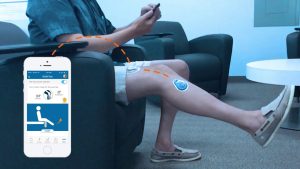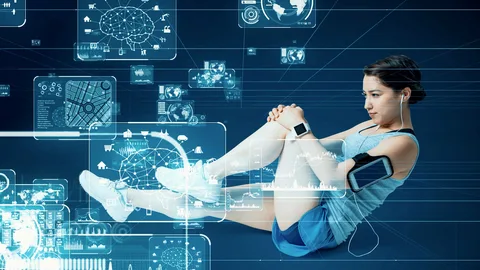Understanding the Concept of Wearable Technology in Healthcare Wearable technology in healthcare is a rapidly evolving field, with the potential to transform the way we approach patient care. These innovative tools, which range from smartwatches to fitness trackers, can monitor vital signs, track physical activity, and even alert healthcare professionals to potential health issues. The
Understanding the Concept of Wearable Technology in Healthcare
Image by : Yandex
Wearable technology in healthcare is a rapidly evolving field, with the potential to transform the way we approach patient care. These innovative tools, which range from smartwatches to fitness trackers, can monitor vital signs, track physical activity, and even alert healthcare professionals to potential health issues. The transformative impact of wearable computing in healthcare is profound, offering a revolution in patient care through advancements in technology.
The potential of wearable technology to revolutionize healthcare lies in its ability to provide continuous, real-time health data. This is a significant departure from traditional healthcare models, which typically rely on intermittent readings taken during office visits. With wearable computing, healthcare professionals can monitor a patient’s health status continuously, enabling early detection of potential health issues and facilitating prompt intervention.
The Role of Wearable Technology in Revolutionizing Healthcare
Wearable technology plays a pivotal role in improving patient monitoring and diagnostics. By providing real-time, continuous health data, wearable devices can help healthcare professionals to detect potential health issues early, when they are often easier and less costly to treat. For instance, a wearable device that monitors heart rate and rhythm can alert healthcare professionals to potential cardiac issues, such as arrhythmias, before they become serious.
Moreover, wearable technology is transforming the healthcare industry’s service delivery. By enabling remote patient monitoring, wearable computing reduces the need for hospital visits, thereby reducing healthcare costs and increasing patient convenience. Furthermore, wearable devices can facilitate patient engagement in their own care, as they provide patients with real-time feedback on their health status. This can motivate patients to adopt healthier behaviors, thereby improving health outcomes.
The Impact of Wearable Technology on Patient Monitoring and Care
Wearable technology is playing a pivotal role in transforming patient monitoring methods. Traditional patient monitoring methods often involve invasive procedures and intermittent readings. In contrast, wearable computing offers non-invasive, continuous monitoring of vital signs, physical activity, and other health indicators. This can provide a more comprehensive picture of a patient’s health status, facilitating more accurate diagnosis and treatment.
In this sense, wearable technology is a catalyst for the healthcare revolution. By offering continuous, real-time health data, wearable devices are enabling a shift towards preventive healthcare, where potential health issues are detected and addressed early. This can improve health outcomes and reduce healthcare costs.
Challenges and Limitations of Wearable Technology in Healthcare
Despite its potential, the healthcare revolution driven by wearable computing is not without challenges. For instance, the accuracy of the health data generated by wearable devices is a major concern. While these devices can provide valuable health insights, they are not always as accurate as traditional diagnostic tools. This can lead to false positives or negatives, potentially compromising patient care.
Moreover, the use of wearable computing in healthcare raises significant privacy and security concerns. Health data is sensitive information, and the risk of data breaches is a serious concern. If not properly addressed, these concerns could impede the progress of the healthcare revolution driven by wearable computing.
The Future of Healthcare: Wearable Technology and Beyond

Image by : Yandex
Despite these challenges, the transformative potential of wearable computing in healthcare is undeniable. As technology continues to evolve, we can expect to see even more innovative applications of wearable computing in healthcare. From smart contact lenses that monitor glucose levels to implantable devices that deliver medication, the possibilities are endless.
In the future, wearable computing could drive a healthcare revolution characterized by personalized, preventive care. By providing real-time, continuous health data, wearable devices could enable healthcare professionals to tailor treatments to individual patients’ needs and detect potential health issues early. In this way, wearable computing could transform the healthcare landscape, improving health outcomes and reducing healthcare costs.
















